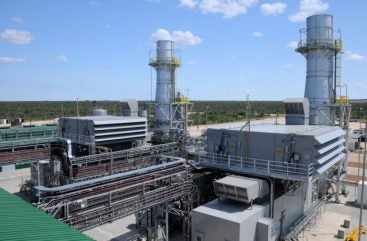
On 22 November the US Environmental Protection Agency issued a proposal that would mean tighter nitrogen oxides standards for gas-fired power plants. But the outlook for these standards – last updated in 2006 – is unclear, under the incoming Trump administration. The EPA proposes to keep its existing standards for sulphur dioxide, which it believes is already ‘well controlled.’
The proposal would ensure that new turbines built at power plants or industrial facilities – especially large ones that could operate for decades – would be among the most efficient and lowest-emitting turbines ever built, said the EPA.
The EPA’s justification for limiting NOx is that it contributes to asthma, respiratory infections and other health problems and reacts with other volatile organic compounds to form ozone and fine particulate matter.
The last set new source performance standards from the EPA for stationary combustion turbines were issued in 2006. The agency’s latest proposal is driven by a consent decree resulting from a 2022 suit brought by the Environmental Defense Fund and the Sierra Club. This required the EPA to propose updating the NOx standards for new power plants this month, and to take final action by November 2025.
The Sierra Club urged the incoming Trump administration to adopt the proposed standard. ‘Sierra Club will vigorously oppose any attempt to weaken these safeguards, and will consider all options – including litigation – if the final standards do not adequately protect the health and wellbeing of our families and communities,” the environmental group said on 22 November.
The agency said its proposed revision is based on the use of combustion controls and selective catalytic reduction, a widely used add-on control technology that limits NOx emissions. Smaller facilities and those that operate less often would face a less restrictive standard applying to units that operate at a 20% or lower capacity factor and to combustion turbines under 25 MW that operate at capacity factors below 40%. The proposed NOx standards would affect facilities that begin construction, reconstruction or modification after the standards are published in the Federal Register, according to the EPA.
EPA estimates that its proposal would cut NOx emissions by 198 tons in 2027 and 2659 tons in 2032, providing net benefits of up to $340 million, and estimates the rule will cost $166 million to implement from 2025 through to 2032.
Roll-back
When president-elect Donald Trump earlier this month selected Lee Zeldin, a Republican from New York to run the EPA and carry out his promise to roll back EPA rules – he oversaw the roll–back of more than 100 environmental rules when he last was US president – he said Mr Zeldin would “ensure fair and swift deregulatory decisions … enacted in a way to unleash the power of American businesses, while at the same time maintaining the highest environmental standards, including the cleanest air and water on the planet”.
Zeldin, who was in the House of Representatives until last year as a member for a New York district, said he was looking forward to cutting red tape as the EPA administrator.






